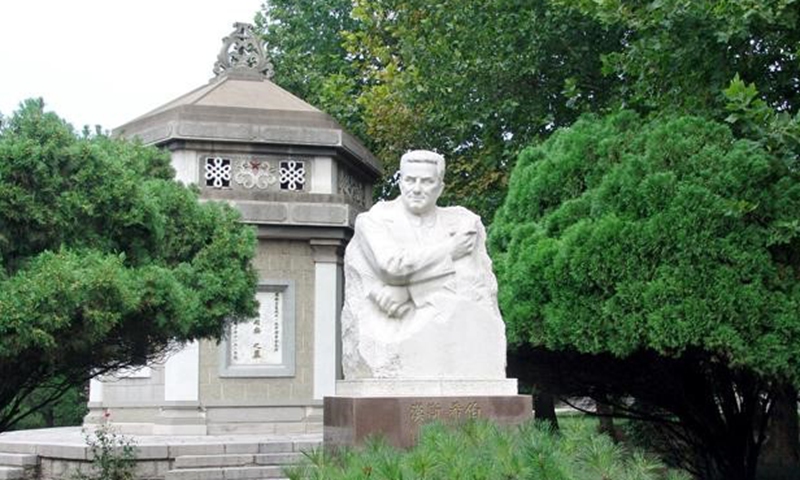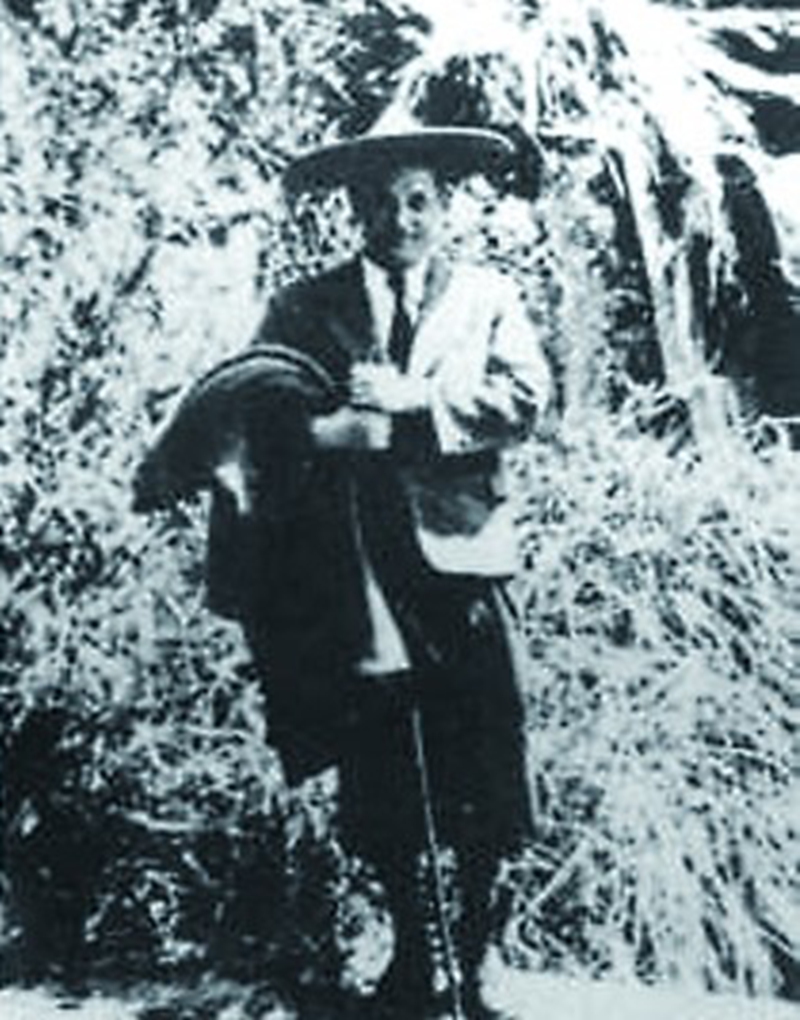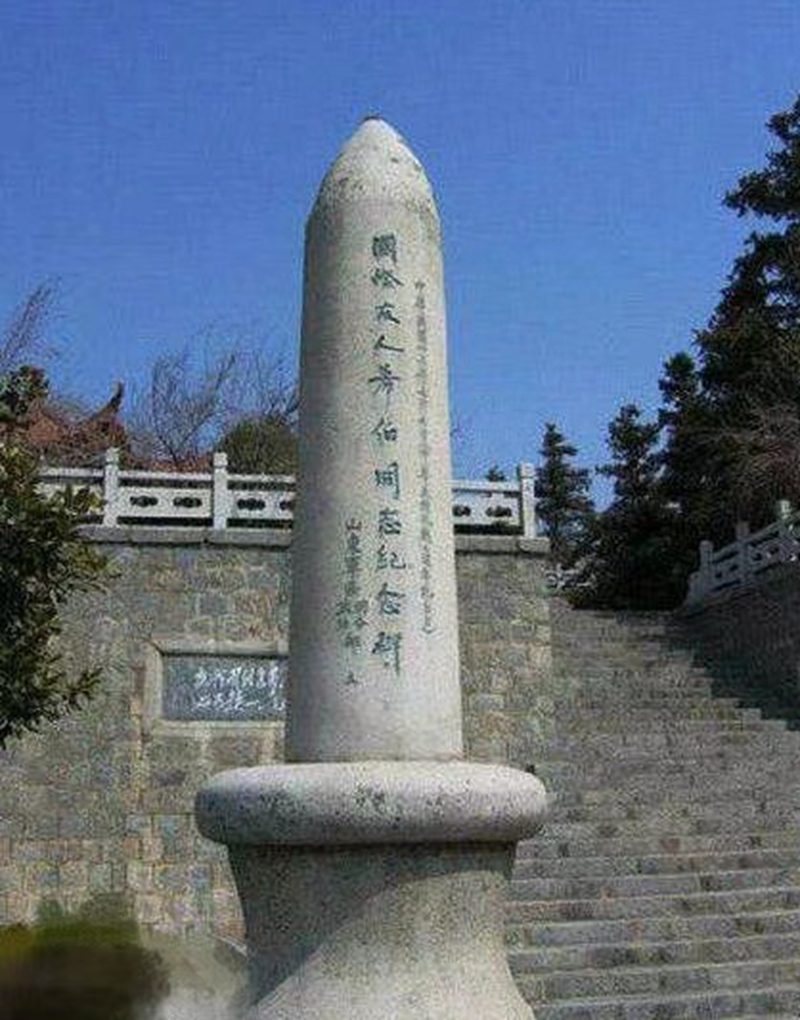




- BRNN
- BRI News
- BRNN News
- Database
Official Documents Polices and Regulations
Inter-government Documents International Cooperation BRI Countries
Business Guide Economic Data BRI Data
Trade
Investment Projects Latest projects
Cases - Content Pool
In the Cemetery of the Revolutionary Martyrs of East China, a place filled with flowers, a tall white marble statue is particularly eye-catching. The figure stares ahead composedly, with two arms crossing over the chest, a pen in one hand, and an interview book in the other. This is the statue of Hans Shippe, a Polish reporter covering the Far East and the Pacific during the World Anti-Fascist War, and the only Polish reporter who died on China's battlefield.

The Statue of Hans Shippe
Shippe first came to China in 1925, and having witnessed the May Thirtieth Incident, he became extremely disappointed in the Kuomintang (KMT) government. Nevertheless, he saw the hope of victory in the CPC-led anti-Japanese troops in the base area of the New Fourth Army in southern Anhui. He praised the New Fourth Army's strict execution of discipline and unparalleled spirit of sacrifice in the Guerrilla in the Yangtze River Delta.
According to Shippe, anyone who wants to truly understand China and how valiantly and arduously the Chinese people have fought the enemy must come to the enemy-occupied areas in China. As a war correspondent, Shippe had long been eager to learn more about the CPC-led anti-Japanese troops. In 1941, at a reception held by Liu Shaoqi and Chen Yi to welcome Shippe to the base area in northern Jiangsu, he indicated that without the New Fourth Army, the Eighth Route Army and the CPC's struggle for the united front, there would be no War of Resistance and the glorious independence movement in China.
To break the news blockade by Japan and its puppet army, Shippe made a lengthy journey to Shandong for coverage. He found on his way that everyone, rich or poor, were passionate and generous to the soldiers of the New Fourth Army, and declined to charge them anything incurred during the march. This is what the people said, "You are fighting to protect us despite all the hardships. We will not take your money." In his article Revisiting the Base Areas of the New Fourth Army, Shippe wrote that no army other than the New Fourth Army had been trusted, praised and loved by the people to such an extent.
Shippe travelled all over the base area in Shandong and was impressed by the vibrancy in the base area in the enemy rear. In Suozhuang and Jiehu villages, old and middle-aged women of the shoe-making teams happily made shoes for the Eighth Route Army. Children sang anti-Japanese songs and stood guard proudly with their red-tasseled spears. Young pioneers called him "Uncle Shippe". Kind-hearted locals saved flours to make noodles for him while feeding themselves with sorghum pancakes.

Shippe at the rural anti-Japanese base area in northern Jiangsu
In a letter to his wife, Shippe mentioned that people ran after him, surrounded him, and looked at him friendly as if he was from the outer space, but he felt very much at home.
As the first western journalist in the anti-Japanese base area of the enemy-occupied regions in Shandong, Shippe pointed out in a series of his articles that without the CPC, the Eighth Route Army and the New Fourth Army, it would be unimaginable for China to persist in the War of Resistance.
In 1941, the Japanese army launched the "mopping-up" operation in Shandong. Shippe's fellow comrades-in-arms asked him to leave, yet he refused with a smile and insisted on fighting with the Eighth Route Army till the very end. He believed that his mission was to fight the invaders, with a pen in one hand and a gun in the other. During a breakout from an encirclement, Shippe was seriously injured and paid the ultimate price. To commemorate him, the soldiers and civilians in Shandong built a white conical monument with these words engraved: "Leaving his Footsteps in Eurasia for the Cause of Internationalism, and Sacrificing his Life in Yimeng for the War of Resistance". An international friend of China finally rests in peace at his "home".

Monument in Commemoration of Hans Shippe

Tel:86-10-65368972, 86-10-65369967